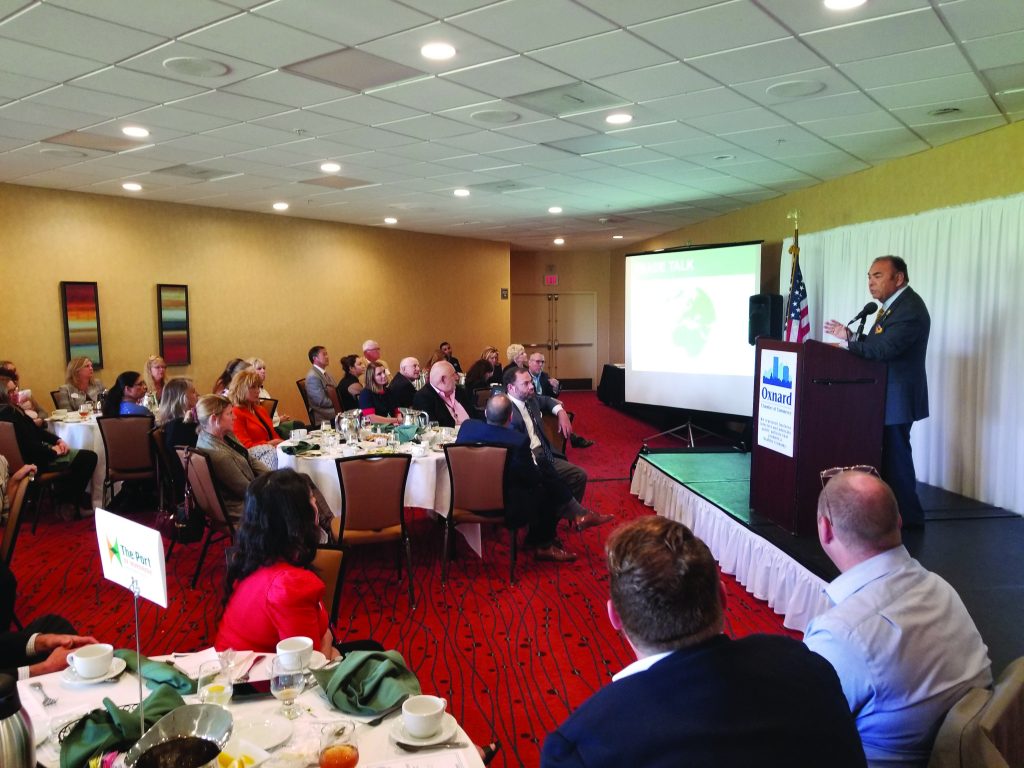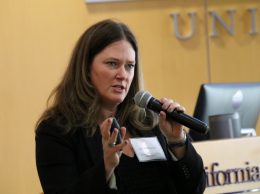Port president pushes for $250 million for expansion

Port of Hueneme board president Jess Herrera called for collaboration with local city leaders to support a $250 million plan that would continue a string of expansions for the site.
In remarks to Ventura County business leaders, Herrera quoted from the 1976 movie “Network,” saying he was “mad as hell” about declining economic activity in the county and a lack of political support for projects that would spur job creation.
“Our local economy is at a tipping point, if we don’t do something to improve it,” he said. “I believe all the gains we’ve made at the Port of Hueneme are at a tipping point, are at risk, if we are not allowed to continue to grow.”
Herrera cited a 2018 report by the California Lutheran University Center for Economic Research and Forecasting that tracked a multi-year contraction in the county’s economy. The report showed large numbers of residents commute out of the county for work, and job and population growth figures have fallen behind state and national benchmarks.
The port has grown its footprint by more than half in the last 25 years, Herrera said. The $250 million plan would add to the total, including the creation of a 250-acre enterprise zone and logistics park by 2030.
Other projects would include increased berth capacity and a parking structure to expand the port’s capacity for auto imports. Building them, however, would require creative financing tools such as a $65 million bond for the structure, said Herrera, who is president of the board of commissioners of the Oxnard Harbor District, the governing body for the port.
Additionally, he called on the city to streamline permitting processes for new developments at the port, citing the initiation of an environmental impact report for a proposal to build a five-year temporary outdoor storage facility on nearly 34 acres at the southeast corner of Hueneme and Perkins roads.
After receiving pushback from residents during the permitting process for the facility, the city and the Oxnard Harbor District decided in July to pursue a full environmental study. The report is expected to take six to eight months, and be released for public comment in early 2020.
“We do have ambition to continue to grow, but if the political will is not out there to support this, we’re never going to get there,” Herrera said.
Auto imports have increased 13 percent in 2019, the port said, as well as a 70 percent increase in imported fruits and vegetables. The 2030 plan would add some 4,000 jobs in the county, Herrera said.
Hosted by the Oxnard Chamber of Commerce, the event took place Oct. 11 at the Residence Inn by Marriott Oxnard River Ridge. Herrera noted the chamber’s role in the creation of the port in Oxnard, including an initial $1.5 million bond to fund its buildout.
Chamber of Commerce President and CEO Nancy Lindholm said the organization plays a key role in helping the port assess the economic impacts of the projects and seeks to strengthen ties between the port and the regional agricultural community.
It could also play a role in securing financing for projects it endorses, having aided the port in applying for federal grants for projects like the electrification and on-shore power system that sought to reduce emissions from docked ships and the deepening project that enabled it to house larger vessels.
New tariffs could threaten growth at the port, Herrera said, adding that trade restrictions would fall heavily on small businesses, which make up around a third of all U.S. exports nationally.
“The road to economic well-being has to go through Main Street,” he said. “On a national level, we need to ensure our U.S. government implements trade rules that promote and protect our national interests. We know that trade works but that tariffs do not work.”
— Contact Marissa Nall at [email protected]











